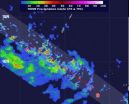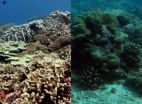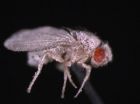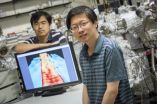(Press-News.org) The reduction of soil carbon stock caused by the conversion of pasture areas into sugarcane plantations – a very common change in Brazil in recent years – may be offset within two or three years of cultivation.
The calculation appears in a study conducted by researchers at the Center for Nuclear Energy in Agriculture (CENA) of the University of São Paulo (USP) in collaboration with colleagues from the Luiz de Queiroz College of Agriculture (Esalq), also at USP. The study also included researchers from the Federal Institute of Alagoas (IFAL), the Brazilian Bioethanol Science and Technology Laboratory, the Institut de Recherche pour le Développement in France and Harvard University, Colorado State University and the Shell Technology Center Houston in the United States.
Findings from the project "Soil carbon stocks on land-use change process to sugarcane production in South-Central Brazil," carried out with funding from FAPESP, were described in an article published in the online version of the journal Nature Climate Change.
"The study indicates that the soil carbon balance of pasture areas converted for the cultivation of sugarcane designed for ethanol production is not as negative as originally estimated," said Carlos Clemente Cerri, project coordinator and researcher at CENA.
According to Cerri, soil from pasture areas has a carbon stock whose volume varies only slightly over the years. However, the process of preparing this type of soil for conversion to sugarcane plantations causes part of the carbon stock to be emitted into the atmosphere as carbon dioxide (CO2).
In contrast, depending on the type of management, the introduction of sugarcane to pasture areas could compensate for, or even add to, the initial soil carbon stock when the organic matter and plant residue penetrate the ground.
Moreover, the ethanol produced from sugarcane grown in these areas over time ultimately offsets the CO2 emissions that occur during the conversion process because biofuel contributes toward reducing the burning of fossil fuel, explained the researcher.
The researchers conducted measurements and collected 6,000 soil samples from 135 regions in south-central Brazil, which is responsible for more than 90% of Brazil's sugarcane production.
At each of the sites, soil samples were collected from areas of sugarcane cultivation and from other areas to be used as reference. These reference areas included pastures, annual cropland (soybean, sorghum and corn) and Cerrado native vegetation.
According to the researchers, the study findings could contribute toward guiding expansion policies for sugarcane production aimed at producing ethanol to ensure the biofuel's sustainability - Ethanol demand in Brazil is expected to jump from an annual total of 25 million liters to 61.6 billion liters by 2021.
The professor indicated that to reach this number, the area of sugarcane production in Brazil would need to expand from the current 9.7 million hectares to 17 million hectares.
Cerri notes that among the options for reaching the target area, the priority for expansion of production is expected to be the conversion of degraded lands, principally those used as pastures, into sugarcane plantations.
Between 2000 and 2010, three million Brazilian hectares were converted to sugarcane cultivation areas. More than 70% of this land consisted of pastures, and 25% had been used for growing grains, said the study's researchers.
INFORMATION:
Payback time for soil carbon from pasture conversion to sugarcane production
Estimate made by Brazilian researchers in collaboration with colleagues from France and USA was published in the journal Nature Climate Change
2014-07-03
ELSE PRESS RELEASES FROM THIS DATE:
New satellite data like an ultrasound for baby stars
2014-07-03
An international team of researchers have been monitoring the "heartbeats" of baby stars to test theories of how the Sun was born 4.5 billion years ago.
In a paper published in Science magazine today, the team of 20 scientists describes how data from two space telescopes – the Canadian Space Agency's MOST satellite and the French CoRoT mission – have unveiled the internal structures and ages of young stars before they've even emerged as full-fledged stars.
"Think of it as ultrasound of stellar embryos," explains University of British Professor Jaymie Matthews, MOST ...
A young star's age can be gleamed from nothing but sound waves
2014-07-03
VIDEO:
In a young region like the so-called Christmas Tree Cluster, stars are still in the process of forming. A star is 'born' once it becomes optically visible (bottom right). During...
Click here for more information.
Determining the age of stars has long been a challenge for astronomers. In experiments published in the journal Science, researchers at KU Leuven's Institute for Astronomy show that 'infant' stars can be distinguished from 'adolescent' stars by measuring the acoustic ...
Sweet genes
2014-07-03
Edmonton, July 3, 2014 – A research team at the Faculty of Medicine & Dentistry at the University of Alberta have discovered a new way by which metabolism is linked to the regulation of DNA, the basis of our genetic code. The findings may have important implications for the understanding of many common diseases, including cancer.
The DNA wraps around specialized proteins called histones in the cell's nucleus. Normally, histones keep the DNA tightly packaged, preventing the expression of genes and the replication of DNA, which are required for cell growth and division. ...
NASA sees rainfall in newborn Tropical Depression 8W
2014-07-03
Powerful thunderstorms in some areas of newborn Tropical Depression 08W in the Northwestern Pacific Ocean were dropping heavy rainfall on July 3 as NASA's Tropical Rainfall Measuring Mission (TRMM) satellite passed overhead.
The eighth depression of the Northwestern Pacific Ocean season formed on July 3 at 0900 UTC (5 a.m. EDT). It was located near 10.0 north latitude and 144.3 east longitude about 240 nautical miles south of Andersen Air Force Base, Guam. Tropical Depression 08W or TD08W had maximum sustained winds near 30 knots (34.5 mph/55.5 kph) and it was moving ...
Safer, cheaper building blocks for future anti-HIV and cancer drugs
2014-07-03
A team of researchers from KU Leuven, in Belgium, has developed an economical, reliable and heavy metal-free chemical reaction that yields fully functional 1,2,3-triazoles. Triazoles are chemical compounds that can be used as building blocks for more complex chemical compounds, including pharmaceutical drugs.
Leveraging the compound's surprisingly stable structure, drug developers have successfully used 1,2,3-triazoles as building blocks in various anti-HIV, anti-cancer and anti-bacterial drugs. But efforts to synthesize the compound have been hampered by one serious ...
Tropical Storm Douglas weakening in the eastern Pacific
2014-07-03
Tropical Storm Douglas is on a weakening trend, according to the National Hurricane Center, and satellite imagery showed that the storm appeared more elongated on July 3.
NOAA's Geostationary Operational Environmental Satellite or GOES-West satellite captured visible data on Douglas just after sunrise on July 3 at 13:15 UTC (9:15 a.m. EDT). The data from GOES-West was made into an image at NASA/NOAA's GOES Project at the NASA Goddard Space Flight Center in Greenbelt, Md.
Forecaster Stewart at the National Hurricane Center cited that Douglas' thunderstorm activity had ...
Rethinking the reef
2014-07-03
A new study by biologists at San Diego State University and Scripps Institution of Oceanography shows that inhabited coral islands that engage in commercial fishing dramatically alter their nearby reef ecosystems, disturbing the microbes, corals, algae and fish that call the reef home.
The study's lead author, Linda Wegley Kelly, is a postdoctoral scholar in the lab of SDSU virologist Forest Rohwer.
For the study, she looked at seawater samples collected from the surfaces of reefs surrounding all 11 of the Line Islands, a chain of atolls in the central Pacific Ocean. ...
Fruit fly immunity fails with fungus after (space)flight
2014-07-03
Before you swat away the next fruit fly, consider instead just how similar its biological complexities are to our own. In a study published in PLOS ONE, researchers led by Deborah Kimbrell, Ph.D., at the University of California, Davis (UC Davis) and their collaborators, studied how microorganisms may alter fruit flies' immunity in space and in hypergravity, or increased gravity. The article is titled "Toll Mediated Infection Response Is Altered by Gravity and Spaceflight in Drosophila."
This study suggests that having normal gravity or hypergravity on the space station ...
Drug shows promise for effectively treating metabolic syndrome
2014-07-03
(SALT LAKE CITY)—University of Utah researchers have discovered that an enzyme involved in intracellular signaling plays a crucial role in developing metabolic syndrome, a finding that has a U of U spinoff company developing a drug to potentially treat the condition.
The researchers, led by Jared Rutter, Ph.D., professor of biochemistry, hope to begin human clinical trials of a drug in the next couple of years.
"The approved drug therapies do not treat or prevent this condition in most people," says Rutter, senior author of a study describing the research published ...
With 'ribbons' of graphene, width matters
2014-07-03
MILWAUKEE – Using graphene ribbons of unimaginably small widths – just several atoms across – a group of researchers at the University of Wisconsin-Milwaukee (UWM) has found a novel way to "tune" the wonder material, causing the extremely efficient conductor of electricity to act as a semiconductor.
In principle, their method for producing these narrow ribbons – at a width roughly equal to the diameter of a strand of human DNA – and manipulating the ribbons' electrical conductivity could be used to produce nano-devices.
Graphene, a one-atom-thick sheet of carbon atoms, ...
LAST 30 PRESS RELEASES:
Scalable and healable gradient textiles for multi‑scenario radiative cooling via bicomponent blow spinning
Research shows informed traders never let a good climate crisis go to waste
Intelligent XGBoost framework enhances asphalt pavement skid resistance assessment
Dual-function biomaterials for postoperative osteosarcoma: Tumor suppression and bone regeneration
New framework reveals where transport emissions concentrate in Singapore
NTP-enhanced lattice oxygen activation in Ce-Co catalysts for low-temperature soot combustion
Synergistic interface engineering in Cu-Zn-Ce catalysts for efficient CO2 hydrogenation to methanol
COVID-19 leaves a lasting mark on the human brain
Scientists use ultrasound to soften and treat cancer tumors without damaging healthy tissue
Community swimming program for Black youth boosts skills, sense of belonging, study finds
Specific depressive symptoms in midlife linked to increased dementia risk
An ‘illuminating’ design sheds light on cholesterol
Who is more likely to get long COVID?
Study showcases resilience and rapid growth of “living rocks”
Naval Research Lab diver earns Office of Naval Research 2025 Sailor of the Year
New Mayo-led study establishes practical definition for rapidly progressive dementia
Fossil fuel industry’s “climate false solutions” reinforce its power and aggravate environmental injustice
Researchers reveal bias in a widely used measure of algorithm performance
Alcohol causes cancer. A study from IOCB Prague confirms damage to DNA and shows how cells defend against it
Hidden viruses in wastewater treatment may shape public health risks, study finds
Unlock the power of nature: how biomass can transform climate mitigation
Biochar reshapes hidden soil microbes that capture carbon dioxide in farmland
Reducing saturated fat intake shows mortality benefit, but only in high-risk individuals
Manta rays create mobile ecosystems, study finds
Study: Mixed results in using lipoic acid to treat progressive multiple sclerosis
Norbert Holtkamp appointed director of Fermi National Accelerator Laboratory
New agentic AI platform accelerates advanced optics design
Biologists discover neurons use physical signals — not electricity — to stabilize communication
Researchers discover that a hormone can access the brain by hitchhiking
University of Oklahoma researcher awarded funding to pursue AI-powered material design
[Press-News.org] Payback time for soil carbon from pasture conversion to sugarcane productionEstimate made by Brazilian researchers in collaboration with colleagues from France and USA was published in the journal Nature Climate Change





